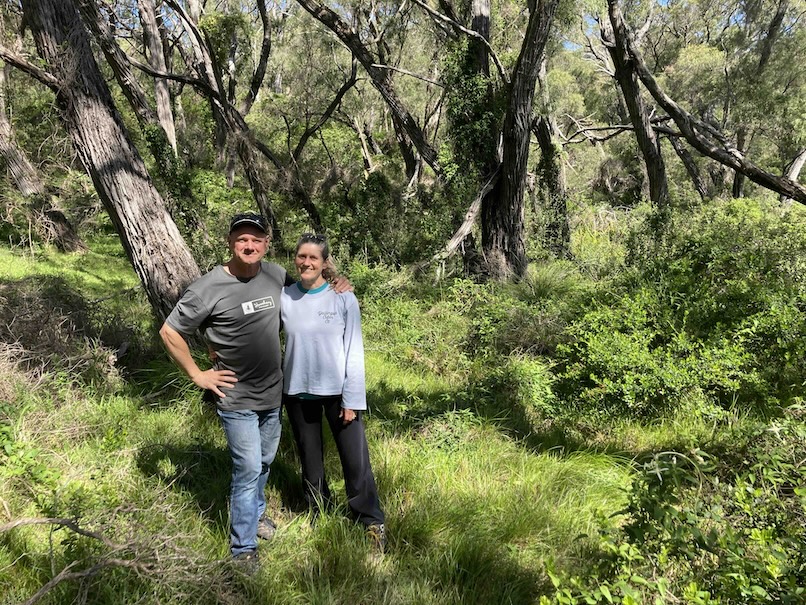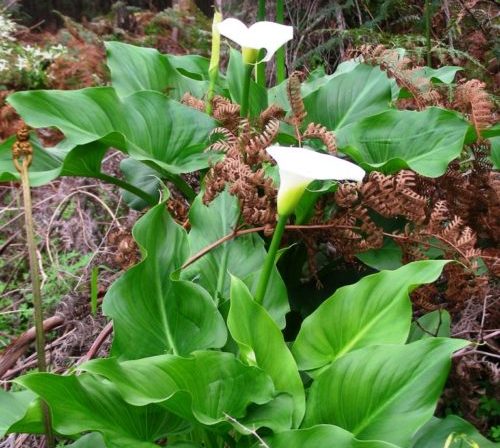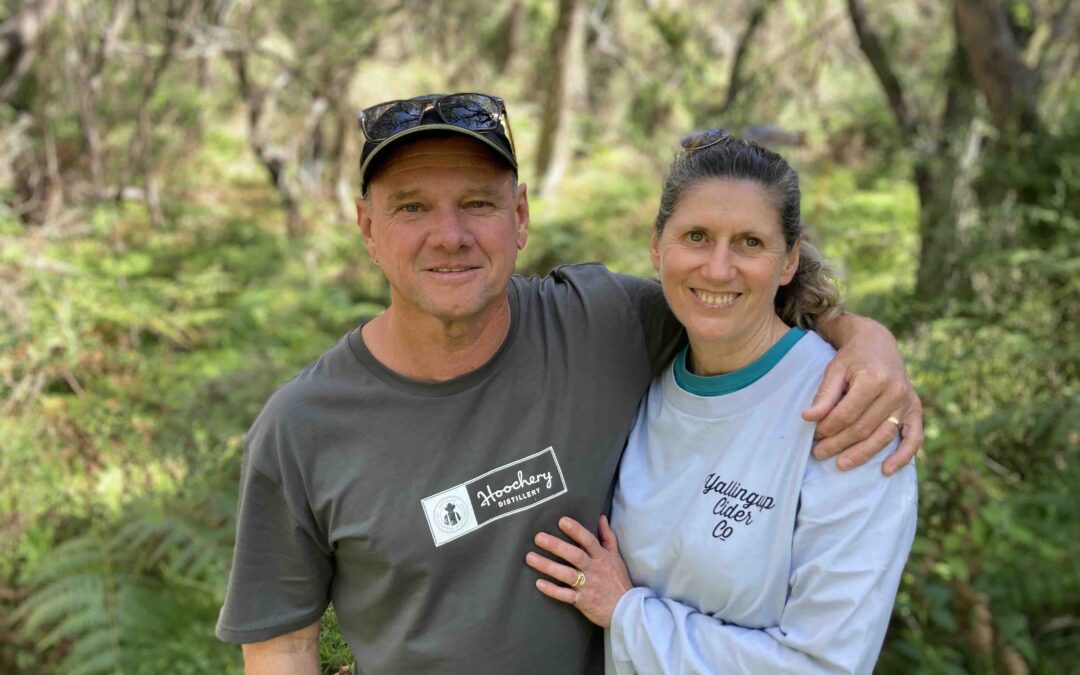A once-degraded, coastal cattle grazing property infested with arum lilies is returning to a forested wildlife habitat thanks to the determination of two local Arum Lily Blitz champions.
Rod Sherwood and his wife Gaynor have been on a decade-long journey of restoration at their 100-acre Hamelin Bay property – and now that they’ve eradicated most of the toxic arum lilies, they find keeping the weeds from re-establishing is an easy job that takes just a few days each year.
The land is home to karri, peppermint and bullich forest where arum lilies once choked the low-lying drainage basins and had a presence in loamy open forest areas, affecting about a third of the entire property.
The couple – who are both outdoor enthusiasts with a love of the native bush – first teamed up with Nature Conservation Margaret River Region to kickstart their arum lily offensive. Ten years on, they are one of almost 2000 landholders across the region taking part in Nature Conservation’s Arum Lily Blitz, and theirs is one of the biggest success stories.

An area once infested with arum lilies is returning to native bush
“Spraying in the first year was comprehensive and very physical as we covered every square metre of forest,” says Rod. “We enjoyed a 90 per cent kill rate. Then, in the second year we de-headed flowering plants on our place and only sprayed on neighbouring properties.”
Once the bulk of arum lilies were gone, Rod said ongoing control was much easier. “From year three onward, we’ve sprayed our property every 2-3 years and it’s generally taken just 2-5 half days with a single backpack,” he says. The ongoing work is necessary because the areas south and east of their land receive a high seed load from bird transport where the arum lilies make inroads if they are not sprayed.
He said most areas once choked with arums are now back to a state of “high biodiversity – remarkably so really”. “Some of those areas were silent when first spraying and now they’re rich with birdlife, orchids, reptiles, frogs, quenda and other mammals,” he says. That’s a massive improvement from areas that had been “100 square metre infestations in compacted winter damp areas with… a monoculture of 1.5-metre-high arum lily”.
Rod says areas that had high plant diversity, good sedge cover, no ongoing soil disturbance and low incoming seed loads recovered well and now resist arum lily reinfestation. “Overall, we’ve had very good results, improving forest quality and biodiversity throughout the property,” he says. “That stands in contrast to the surrounding national park, shire land and private properties which are still in decline. It’s a successful outcome following a big initial effort and sustained but relatively low effort maintenance.”

Rod and Gaynor Sherwood’s property is now close to being free of arum lilies
The couple’s top tips for tackling arum lilies are:
- After applying herbicide in the first year, only spray plants every few years. If you are time-poor, focus on plants that are flowering. But be sure to de-head all flowers, even in sprayed areas.
- De-head regularly every season so that there is no seed set on your property. With time it gives you a good read on where new seed is arriving from.
- Monitor biodiversity. It’s encouraging noting the comeback which reaches a tipping point of acceleration at about year five.
- If biodiversity isn’t returning, observe similar adjacent areas and actively seed species present in those areas to kickstart the process.

Arum lilies are so devastating because the species outcompetes the native flora understory, reduces habitat and food availability for wildlife, and replaces native plants with a dense, toxic monoculture. The lilies start appearing in winter and flower in spring.
The Arum Lily Blitz is funded by the WA Government’s State Natural Resources Management Program. See www.natureconservation.org.au to find out more, register, and receive free herbicide, information and resources.

